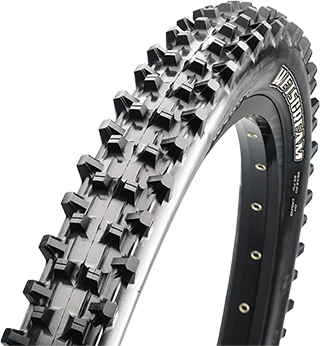We ask the all-important question can you ride a mountain bike on pavement which is a critical question if you intend to use your mountain bike as a commuter bike?
You can typically ride any kind of bike whether it is a road racer, hybrid bike, or mountain bike on the road. However, you need to know that while mountain bikes have a cushy ride and can travel on all manner of surfaces, they are heavier, slower, and harder to pedal on pavement given their design.
Pros and cons of mountain bikes
While mountain bikes are a beloved design they do have their drawbacks and some benefits too. The following are some of the advantages and disadvantages of an MTB you should take into account when considering one for pavement riding.
Pros
- Sturdy and beefy components and frame are made for tough terrain
- The frame geometry makes it easier to gain traction on loose and steep climbs
- Stable and small 26-inch wheels are great for dealing with potholes and rocks
- The suspension provides greater stability and control and makes you more comfortable as the forks and frames take the hits
- Wide knobby tires provide traction and control in loose terrain
Cons
- They are heavier than road or hybrid bikes which makes climbing inclines easier
- Smaller 26-inch wheels tend to have a greater rolling resistance
- Knobby tires make them very ineffective on paved road surfaces
- The suspension takes a significant portion of the pedal stroke making pedaling less efficient
- They are slower and require a lot of effort on paths/roads.
Can you ride a mountain bike on the road?

Not everyone has the money to buy a road bike given how expensive they tend to be. However, there are times when the trails may be under the weather or you just want to try something different by going on the road.
A road bike will always be better for pavement riding especially if you intend to ride for long distances, though you could modify your mountain bike to make it easier to ride on the road.
Nonetheless, it is not possible to make the mountain bike as efficient as the road bike on the road given that it is heavier and harder to pedal especially on steep inclines which makes mountain bike speed slower.
The biggest problem with mountain bikes on the road is their tires which are usually wide and knobby. This makes them excellent on trails as they can easily go over roots and rocks in the forest.
However, this is not good for road riding as the tires will provide much rolling resistance as compared to the thin and smooth tires on a road bike that provide less resistance. Moreover, riding the mountain bike on the road for too long may ruin the tires by eating into the knobs.
Why mountain bikes are hard to ride on the road
Even though you could enjoy taking a mountain bike for a road ride, their certain drawbacks that you have to take into account. These are critical issues that you need to know even as you may be thinking of converting your mountain bike into a road bike.
Mountain bikes come with wider knobby tires which make for greater rolling resistance. This means that you will have to use more energy to pedal on the road. However, these can always be swapped out with slick tires and wheels when you are going out on the road.

All mountain bikes including the XC, hybrid, or trail bike are heavier given that they are designed to deal with tougher terrain.
To make them sturdier and able to take the stress of rough terrain, they are usually made with thicker heavier frames and come with suspension, all of which makes for a heavy and slower bike, especially on the hills.
In the quest to make a mountain bike more robust and sturdy, the bike design makes it heavier. Nonetheless, the use of thicker frames makes the bike more durable while the suspension makes the bike handle better and be more comfortable on the trails.
Mountain bike tires on pavement
While you can ride your mountain bike on paved roads, that is one of the easiest ways to get your tires to wear out prematurely. Since mountain bike tires are knobby and designed to be ridden on the softer ground on the trails, the tires will not last as long as they otherwise would.
Even though it is impossible to tell how long a mountain bike tire would last, generally your tires will last longer if you ride on softer trails. If you ride your bike on trails with rocky and rough gravel several times a week, the tires will last for a few months before needing to be replaced.
If you are very reserved and only take your bike on smooth pavement or soft dirt trails one or two days a week, your tire could last for between 2-3 years. However, there are other factors that may impact the tire life of your mountain bike tires apart from the terrain including the material it is made of.
How Long Do Mountain Bike Tires Last on Pavement
Mountain bike tires will not last for long on the pavement as their tires are designed for rocky and rough trails rather than on the road. The knobby nature of your mountain bike means that mountain bike tires will be worn down faster by pavement as opposed to the dirt of trails which are easier on the tires.
Still, if you ride on soft dirt and smooth pavement and take your bike out only on the weekends, your mountain bike tires may last for between 2-3 years. Other factors that may influence the longevity of your mountain bike tires include tire care and maintenance and riding style.
How to convert your mountain bike into a commuter bike
Note that these instructions can also be used to make your mountain bike faster
- Get Slick Tires – Purchase mountain road tires that come with a smooth tread while still having mountain tire dimensions to reduce the rolling resistance on the road that a true mountain bike tire will have.
- Swap the Gearing – Swap out the single gearing on the mountain bike and replace it with the larger and multiple chainrings of a road bike which makes changing gears and adjusting cadence easier.
- Get Drop Bars – To increase aerodynamics, you can get drop bars and add them to the bike. This will reduce drag and air resistance making pedaling easier.
- Remove or Lockout the Suspension – This makes the bike more efficient and provides more power to the drive train for every pedal stroke. You can either get a new suspension-less fork or lock off the suspension.
- Get Racks and Panniers – You could carry your laptop bag on your back but this will cause back aches and cause you to sweat on the back during the summer. A rack and pannier provide safe and waterproof facilities for all your valuables while you are commuting to work.
- Buy Reflectors and Lights – There may be days when you are caught outside in the dark and you will need reflectors to be seen on the road and white light to see the road in front of you.
- Install Fenders and Mud Flaps – You are going to work and you do not want to arrive looking all dirty especially when it rains.
All of these improvements will result in significant improvements in speed particularly if you are using the bike as a daily commuter.
Mountain bike for long-distance riding
With the above modifications, most mountain bikes will be ready for long-distance riding. However, it is important to note that you still need to get a great saddle for long distances. Still, you will have to break in your saddle for several weeks or be prepared for saddle pain
On the other hand, not every bike will provide a great distance and in my experience, the hardtail is the best for long distances since it does not reduce the pedaling efficiency as a front and back suspension bike.
Wear seamless pants to avoid skin friction which is inevitable after riding for several hours. If you did not get slick tires, you can also increase the pressure on your tires to reduce rolling resistance.
Mountain bikes are strong durable bikes and can take a lot of punishment on a long-distance ride. However, if you prime the bike to make it suitable for road riding conditions you should not have any problems going on long-distance rides on a mountain bike.
How much slower is a mountain bike on the road?
A mountain bike is usually 10-30 percent slower than a road bike and up to 15% slower on paved and smooth surfaces as compared to a road bike.
This has to do with features such as weight, riding posture, frame geometry, and rolling resistance which makes the mountain bike less aerodynamic and harder to pedal with the same level of effort.


